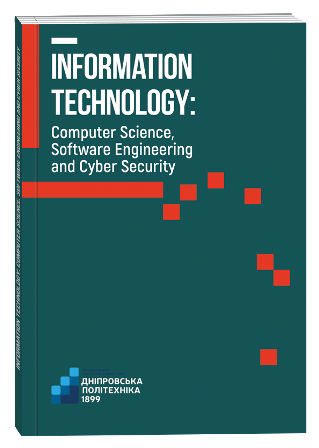DYNAMIC PROGRAMMING OF OPTIMUM DECISIONS OF MANAGEMENT TAKING INTO ACCOUNT INLYING STATE TO AGENT OF MOULTIAGENTNIH SYSTEMS
DOI:
https://doi.org/10.32782/IT/2021-1-4Keywords:
multiagent systems, agents, dynamic programming, state variables, normal Cauchy form, state optimization.Abstract
The rapid development of intelligent multi-agent systems requires research and analytical justification of the existence of the main components of these systems, namely agents. In this case, one of the main basic components of agents is their internal state, which significantly affects the formation of ways to make certain decisions. The aim of the work is to study the possibility of forming rational solutions in multi-agent systems based on determining the internal state of agents. Realization of the set purpose provides application of the analytical designing which is based on dynamic programming and provides the most optimum on accuracy and power consumption according to the set criterion of formation of control decisions. The methodology of providing the solution of the presented problem consists in application of display of an internal condition of agents in state variables that allows to minimize resources of formation of initial decisions in multiagent systems. Scientific novelty. It consists in the application of analytical modeling in state variables written in the normal Cauchy form using the principle of dynamic programming by R. Bellman to represent the internal state of agents in multiagent systems, which allows to optimize the criterion for accuracy and energy consumption of initial solutions formed in systems. Conclusions. The use of equations in state variables written in the normal Cauchy form to represent the internal state of agents of a multiagent system is an opportunity to more effectively work out the formation of optimal according to the specified criterion for accuracy and energy consumption laws of decisions.
References
Аксенов К.А. Теория и практика средств поддержки принятия решений: монография. Germany, Saarbrucken: LAP LAMBERT Academic Publishing GmbH&Co.KG, 2011. 341 c.
Мещеряков Л.І. Методи і моделі ідентифікації та управління гірничими технологічними комплексами: Монографія. Дніпропетровськ : Національний гірничий університет, 2009. 263 с.
Москалев И.М. Системы анализа и оптимизации процессов преобразования ресурсов : дис. канд. техн. наук. Екатеринбург, 2006. С. 138–150.
Скобелев П.О. Мультиагентные технологии для управления ресурсами в реальном времени // Механика, управление и информатика (Таруса, 2-4 марта 2011 г.). Таруса, 2011. URL: http://www.iki.rssi. ru/seminar/2011030204/presentation/20110303_03.pdf (дата обращения 02.06.2013).
Мещеряков Л.І. Формування структури підсистеми діагностування гірничих електромеханічних комплексів / Л.І. Мещеряков, С.І. Випанасенко, Н.С. Дрешпак, А.І. Ширін. Збірник наукових праць НГУ. Дніпро, 2018. № 53. С. 213–223.
Мещеряков Л.І. Розпізнавання технологічних станів барабанних млинів на основі нейронних мереж адаптивного резонансу / Л.І. Мещеряков, О.М. Галушко, О.І. Сироткіна, О.Т. Демидов. Збірник наукових праць НГУ. Дніпро, 2019. № 57. С. 129–139.
Дудля М.А. Мещеряков Л.І. Діагностика та проектування бурових машин і механізмів. Навчальний посібник. Дніпропетровськ : Національний гірничий університет, 2004. 267 с.
Meshcheriakov, L. (2015). Identification of stabilizing modes for the parameters of drilling tools. / L. Meshcheriakov, L. Tokar, K. Ziborov. Power Engineering, Control and Information Technologies in Geotechnical Systems, Taylor & Francis Group, London, 2015. 135–142
Александров А.Г. Оптимальные и адаптивные системы / Электронная книга. Москва, 2003. 278 с.
Мещеряков Л.И. Исследование воздействия технологических нагрузок на локально устойчивые состояния барабанных мельниц / Л.И. Мещеряков, М.А. Дудля, В.А. Бородай, Д.В. Хархардина. Збірник наукових праць НГУ. Днепропетровск, 2011. № 53. С. 28–36.
Мещеряков Л.И., Программное обеспечение идентификации состояний барабанных мельниц / Л.И. Мещеряков, Ясир Юзеф Хусcейн Аль Хатиб, А.И. Зубарев. Сб. науч. трудов НГАУ. Днепропетровск, 2010. № 34. Т.1. С. 267–274.







